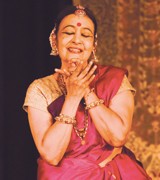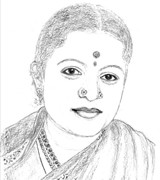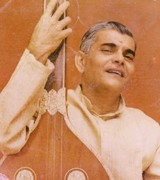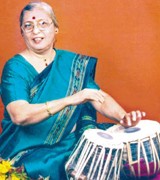COVER STORY
Various views on bani
PUSHKALA GOPAL

The ‘Baani 2016’ conference and festival, hosted by the Kalakshetra Foundation in March, presented a galaxy of persona in Bharatanatyam, with veteran viewpoints and experiences shared through ‘insight’ lectures and demonstrations and performances over six days (11-16 March) in Chennai. The word ‘bani’, as explained by scholar Dr. R. Nagaswamy, refers more to music, with an equivalent word ‘pravritti’ to be found in the Natya Sastra. In the Indian classical music world, the concept of bani or gharana is indicative of a style or a school which has a prescribed form and, when performed, is easily recognisable by the aficionado. The north Indian gharanas pertain to places or courts whilst the Carnatic banis are mostly artist-led. This term must have come into being in the natyam or dance tradition, when it was led primarily by the oral tradition, that is, the nattuvanars who were also the makers of the repertoire and the nartakis or dancers.
Does Bharatanatyam and its scene today have the same scope to be preserved, or defined by the bani?
THE MS CENTURY
The MS soundscape
KANNIKS KANNIKESWARAN

I have only seen MS twice. The first was at a concert at the Music Academy where she commenced the concert with Seetamma mayamma in Vasanta – a raga that was not the most favourite raga of the little boy that I was then – clinging on to my periamma’s hand.
The next time was when I saw her just ten feet away from where I was sitting with my grandmother at the atirudra mahayagnam conducted in Cincinnati in the early 1970s. I vividly remember MS and Radha seated just a few feet away from us sing to a sruti box accompaniment the Bauli raga kriti Sambho Mahadeva as a musical offering at the celebration.
There I was, a 12-year-old boy listening to that voice that sounded no different from what I was used to hearing on radio, the voice that chanted the suprabhatam every Saturday on All India Radio Madras A, early in the morning, the voice that sang Raghupati Raghava rajaram in the Gandhi anjali programme again on Madras A – a Raghupati Ragahava rajaram which would suddenly make a transition to the scale of Mayamalavagaula with the voice conveying a certain sense of pathos that a 12-year-old could easily grasp and sense that it was no ordinary voice. The voice would make the Friday morning programme bring to the little boy, horror and indignation and sorrow at the thought of the assassination of Mahatma Gandhi.
MY GURU
K.V. Narayanaswamy: He illumined our paths
HEMMIGE S. PRASHANTH

It is not often that one comes across a classical musician who excels equally as a performer and as a teacher. Indeed, it is something of a rarity to find an individual adept at both, since these two roles demand different kinds of expertise, focus and involvement. As a performer, the musician aims to share his experience or vision of music with the rasikas; as a teacher, he takes full responsibility for the sishya, and is even authorised to ‘sculpt’ the pupil in his own mould. Especially in the gurukula system of learning, the sishya surrenders himself to the guru’s care, and hence can learn not only music but valuable life-lessons as well. My guru, Palghat K.V. Narayanaswamy (KVN Mama to us), was one such rare musician who was not only a superlative performer worth emulating but also a deeply committed teacher we all looked up to.
I was fortunate to observe KVN Mama teach a wide spectrum of students, right from the sarali varisai to the most advanced level. The manner in which Mama taught them all, always ensuring that his teaching was pitched at just the right level, was an amazing lesson in itself. Mama’s teaching was comprehensive and included all aspects that a student needed to learn, such as voice culture, singing technique and laya.
SLICE OF HISTORY
Aban Mistry and the Parsi contribution to Indian music
SAKUNTALA NARASIMHAN

Parsis have added their names to India’s history as entrepreneurs and generous philanthropists (Tata, Godrej), freedom fighters/politicians (Minoo Masani, Dadabhai Naoroji), scientists (Homi Bhabha), and distinguished achievers in other fields (Nani Palkhivala), but what about music? Dr. Aban Mistry, through the chronicles of her intensive research, opens our eyes to the considerable contribution of the Parsis to India’s musical heritage, through her book on the subject. Aban Mistry is no more (born on 6 May 1940, she passed away on 30 September 2012) but today a small band of Parsis deeply committed to music, continues to serve Indian classical music through a unique, Mumbai-based institution called Swar Sadhna Samiti, carrying Aban Mistry’s name forward as a pioneer.


